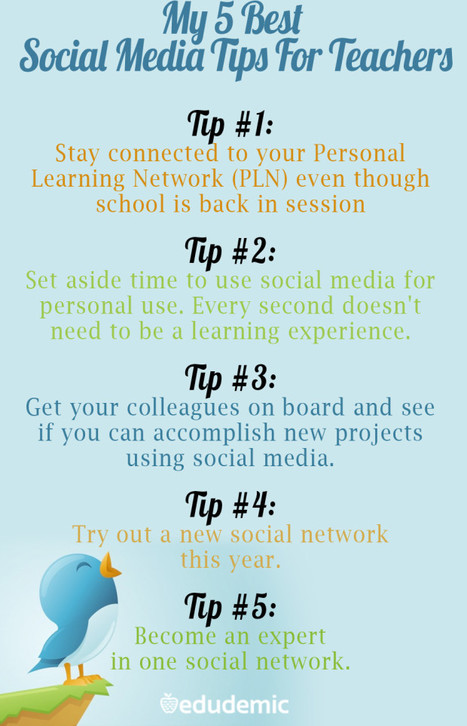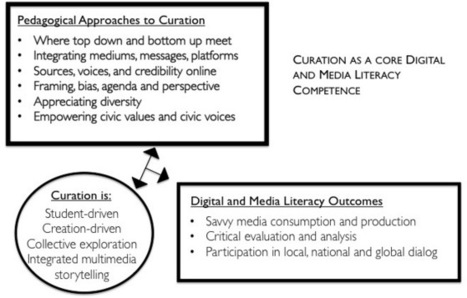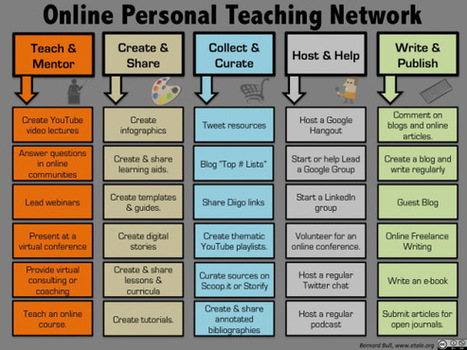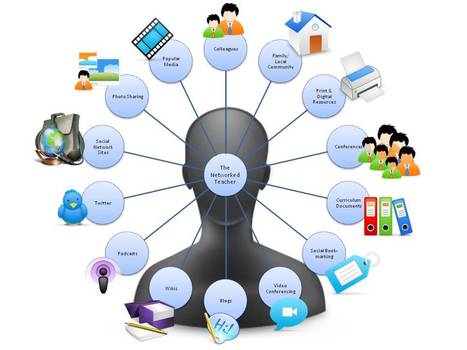“Personal Learning Networks are systems that help learners take control of and manage their own learning. This includes providing support for learners to:
1) set their own learning goals
2) manage their learning; managing both content and process
3) communicate with others in the process of learning and thereby achieve learning goals
Here are some ways that educators are using their PLNs:
- Professional development – learn from content-area specialists
- Locate resources for your classroom, such as free websites and software
- Get lesson plan ideas from master teachers
- Learn about new technology and how to integrate it into your teaching
- Find collaborative solutions
- Find interesting links to education news
How should you start your personal learning network? What are other teachers doing to learn from one another? Why isn't there a simple and easy-to-implement guide to building your very own PLN? Now there is ...
Via
Informatics,
sofipapadi



 Your new post is loading...
Your new post is loading...


























